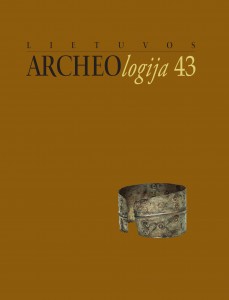Connected or isolated? The spaces of the living and the dead in Iron Age East Lithuania
Connected or isolated? The spaces of the living and the dead in Iron Age East Lithuania
Author(s): Laurynas KurilaSubject(s): Archaeology, Ancient World
Published by: Lietuvos istorijos institutas
Keywords: barrow cemetery; hillfort; spatial relationship; visual contact; East Lithuania;
Summary/Abstract: The worlds of the living and the dead are connected to one another in people’s worldviews and their physical setting in the landscape is a material expression of this relationship. In Lithuanian Iron Age (Roman period–Viking Age) archaeology, burial sites have been rarely approached from this perspective, except for some stereotypical remarks, e.g. it has been argued that water is a boundary between the spaces of the living and the dead. The paper analyses the spatial relationship between the East Lithuanian hillforts and barrow cemeteries and discusses how it reflects the local communities’ perceptions of their communication with their dead. The study is based on five spatial perspectives: distance, direction, location in the terrain in respect to bodies of water, communicative relationship, and visual contact. It concludes that no effort was made to isolate the burial areas from those for the living, i.e. the living maintained spatial bonds with their dead and shared one landscape.
Journal: Lietuvos archeologija
- Issue Year: 2017
- Issue No: 43
- Page Range: 115-142
- Page Count: 28
- Language: English

